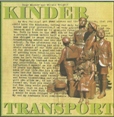 |
 |
|
 |
THOUGHTS
WHILE WALKING THE DOG |
|||||
  Bottom Bottom |
The Laundry Evolution |
June 2, 2009 |
Issue: 10.05 |
|||
|
Some forty minutes later, the laundress must return, transfer the first load into a dryer after removing the all-cotton clothing to air dry. She will stuff the remainder into a dryer, set the timer, and shove the colored clothing into the emptied washer, again set the timer, push start, and run back to her inside chores for another forty minutes. At this point, she returns to the laundry room to remove the whites to be folded, reset the dryer to permanent press, again separate the delicates, dump the rest in the dryer, push a button, and address the really nasty pile. She will change the temperature setting, and water level, put the clothes in with immense amounts of bleach, stain killers, and a lethal detergent, push that button, and hurry back inside to figure out how to accommodate the different diets of her hungry family.. By the time she organizes a balanced meal for her vegetarian, a digestible one for the two year old, something that won’t give her teenager diabetes, and an exotic dish to remind her husband that he is special, the drier buzzer sounds, and she is back in the laundry room folding the colored clothing, stuffing the now gleaming work clothes into the dryer. A routine like this might kill a morning but it is a piece of cake compared to what my grandmother did in the 1920’s. Sunday night, she separated the family’s dirty clothes into whites, colors, and the unrecognizable, and put kindling in the wood stove in the wash house to light the next morning. The wash house was a small shed just outside the back door with a big stove and three immense three legged laundry tubs. On Monday morning, my grandmother was up at five so she could start the laundry water, then go into the kitchen to boil water for washing, and cooking. She set the table, mixed the batter for biscuits, set out the eggs, and bacon, mixed oats, and water in a large pan to simmer, and she returned to the laundry. She hauled the pot of boiling water outside, and poured it into the first laundry tub. She added Crystal White Soap, and the pile of white clothes. She stirred the mixture with an old broomstick, and rubbed the bad spots on a rub board to get them out. While the clothes were simmering, she hurried back into the kitchen to set the table, start the bacon, and cover the porridge so it wouldn’t get gummy. She shoved the biscuits into the oven, and returned to the wash house. She filled the second tub with cold water, transferred the white clothes into it, and boiled the colored clothes in the same water she had used for the first batch. She hurried back to the kitchen to save her biscuits, and fry the eggs. She dished out the porridge with plenty of fresh butter, and jam from last year’s strawberries. While her family gobbled up this immense repast guaranteed to give them early heart attacks, endless embolisms, diabetes, and a cholesterol count in the thousands, she galloped back into the wash house to remove the colored clothes from the wash water, and boil the jeans, and work clothes. She wrung the water out of the whites, and transferred them to the third tub now filled with cold water she had dragged from the pump just outside the back door. Then she hurried back inside to clear the table, send her children off to school, and her husband to work. She returned to the laundry stove to boil the starch until it clabbered, and pray it wouldn’t get lumps or she’d have to start over. She dipped the white clothes in the starch, wrung them out, and carried them outside. She wiped off the lines strung across the back yard, and hung them to dry. She ran back into the wash house, wrung the water out of the colored clothes, dipped them in the starch liquid, dumped the work clothes into the clean rinse water, emptied the soapy water into the vegetable garden, hung the colored clothes, and rinsed the jeans in the second tub of water. She returned to the house to do the breakfast dishes, and make the beds, and then rushed outside to wring out the work clothes, and hang them on the line. By late afternoon, the clothes were dry enough, and she managed to get the sheets off the line without dragging them into the grass very much. She folded them, and put them between the mattresses, and springs of the beds so they’d be pressed when it was time for her change the beds on Wednesday morning. She took down the rest of the clothes, and sprinkled them for the next day’s ironing, finished dusting, set the table, and started the soup for dinner. The next day after her usual morning routines, she put five or six irons on the kitchen stove to heat, and tested them with spit to see if they were hot enough. She wiped the bottom of each iron with a cloth to get the soot off, and created an ironing surface by covering the kitchen table with a quilt. Just when she finished ironing the last shirt, my mother, her three sisters, and her brother came trooping into the house demanding cookies, and milk. “First change into your play clothes,” my grandmother would say. “And put the dirty ones in the laundry hamper.” Hooray for progress! Today’s mothers accomplish procedure in two leisurely hours. In fact, all their housework has been simplified. Now, they have time for community service, car pooling, and a job outside the home. The only task they haven’t streamlined is the time it takes to become a mother. It still takes them nine months to make a baby. Doesn’t it? There is as much dignity in doing laundry as writing a poem Booker T. Washington & Lynn Ruth See Lynn Ruth's website |
||||||
|
Subscribe (free) to the Gantseh Megillah. The Gantseh Megillah and GantsehMegillah.com are designed and hosted by HannaVisioN






 Every time you change your underwear someone has to wash it,
iron it, fold it and put it away. During our formative years, that
person was our mother, and for some of us, it still is. The average
housewife with even a modicum of hygiene will do about fourteen loads of laundry
a week; more if she has a large family. Nowadays, getting the job done
is a matter of carting the dirty clothes into the laundry room, separating
it into whites, colors, and disgustingly filthy, dumping one pile into a washing
machine, pouring in suitable amounts of soap, bleach, spot removers, and
softeners, setting the timer, and pushing Start.
Every time you change your underwear someone has to wash it,
iron it, fold it and put it away. During our formative years, that
person was our mother, and for some of us, it still is. The average
housewife with even a modicum of hygiene will do about fourteen loads of laundry
a week; more if she has a large family. Nowadays, getting the job done
is a matter of carting the dirty clothes into the laundry room, separating
it into whites, colors, and disgustingly filthy, dumping one pile into a washing
machine, pouring in suitable amounts of soap, bleach, spot removers, and
softeners, setting the timer, and pushing Start.







 Printer
friendly page
Printer
friendly page